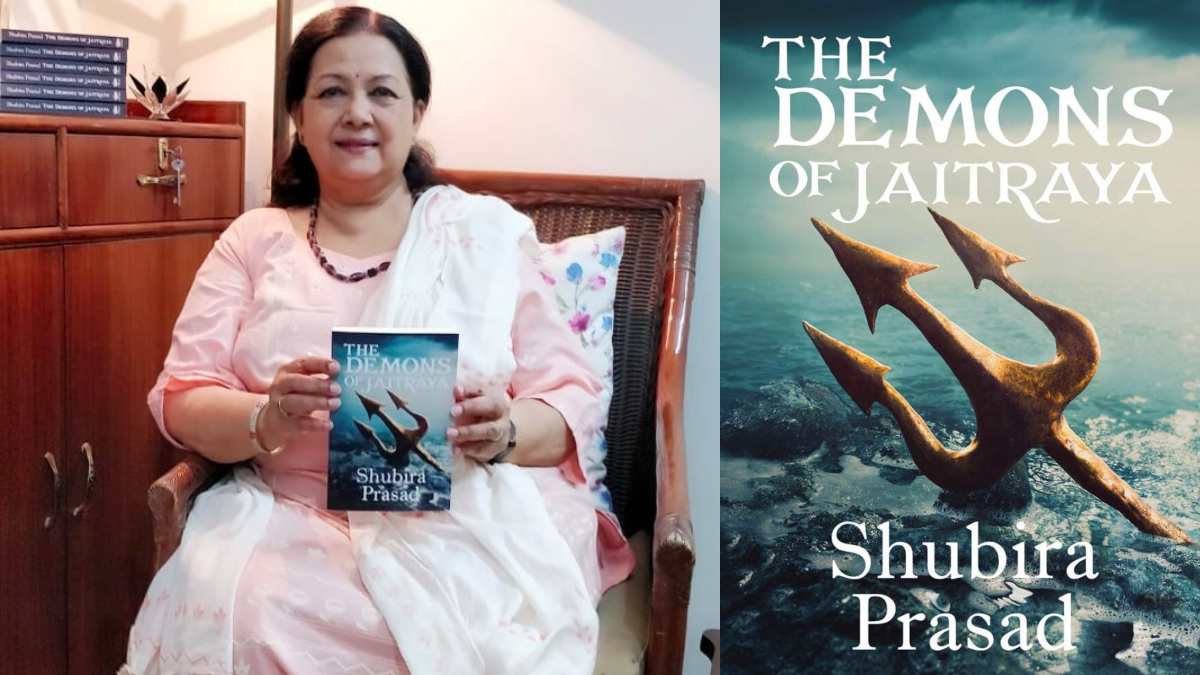


With Ayodhya in the news lately, the Ramayana has captured our imaginations again. Shubira Prasad’s Demons of Jaitraya is the newest entrant in the world of mythological fiction in India, which brings the lessons taught by the epic to the modern world.
Q. The book combines Indian mythology with fantasy. What inspired you to write the story?
A. My extreme love and fascination for the Indian epics compelled me to take a leaf from the Ramayana and go ahead from there. The book is about demons who escaped from the time of Ramayana, but the action takes place here in the 20th and the 21st centuries. Hence, there had to be an amalgamation of mythology and fantasy.
Q. Why did you choose to base your story off the Ramayana? Was it a deliberate decision to set it in the 21st century with a young female protagonist?
A. I have deliberately chosen the con- temporary period so that people can relate to it easily. Even though it is fantasy, the relevance of the story can be felt in the contemporary world. One doesn’t have to draw a parallel, but one can fix the modern day characters in templates provided in this book and appreciate its pertinence. I feel a sound knowledge of mythology makes one prepared to face today’s challenges.It was my idea to have a young female protagonist who is embodied with the traits and focus of Maa Durga yet has all the frailty and qualities of a human. I am also focusing on Bhagwan Ram in the book. Against popular belief, the war between Ram and Ravan or their forces, did not end with the killing of Ravan in Lanka. It is still on.
Q. The lead character, Aishani, is well read in Indian classical and religious texts. Are
there lessons from those texts which have guided you in life too?
A. Yes, of course, if you look closely, all the self-help and guidance books that are around have their roots in our ancient scriptures, which include day to day living, ethics, morality, relationships, work and a myriad of other ethical behaviours. Our ancient scriptures have impressed many erudite scholars from the West too. So much so that many of them have adopted the Hindu way of life. Thus in the book, I have tried to introduce one such figure who understood Hindu scriptures and was probably a Hindu warrior in their earlier births.
Q. Which mythological fiction author/s do you most admire?
A. My sources of inspiration have been the original writers or the sages of our ancient epics. Valmiki’s Ramayana and Ramcharitmanas of Tulsidas have been the main sources of inspiration. However, Indian contemporary writers like Devdutt Patnaik, Amish Tripathi and Chitra Banerjee Divakaruni have greatly impressed me and made me believe that writing based on the epics can be made interesting by adding fantasy to them. Reading of English fantasy writing made me realise that a vacuum existed in contemporary Indian fantasy, particularly in the English language. I have tried to fill that vacuum.
Shubira Prasad’s ‘Demons of Jaitraya’ is published by Vitasta (Rs 350).